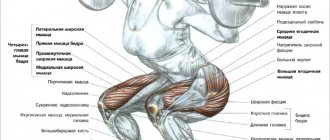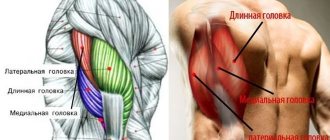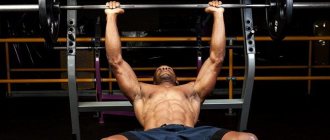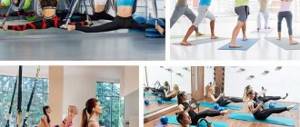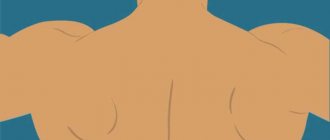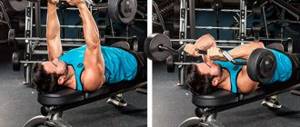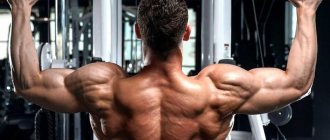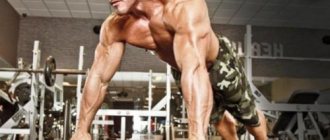Who and when is stretching suitable for?
A huge plus that distinguishes stretching from other types of fitness is that anyone with any level of fitness and flexibility can do it. There are no super difficult exercises here, everything is done within your capabilities. Each exercise has both simplified and complicated versions. The depth of stretching can always be controlled and adjusted.
It is difficult to find athletes who do not know what Stretching in fitness is. It can be done as a warm-up before the main workout or as a cool-down after it. Stretching is also popular as a stand-alone program. Almost every fitness club has such classes.
Benefits of stretching
Everyone who is interested in fitness, professional athletes and amateurs are familiar with stretching. What are its advantages?
Let's take a closer look:
- During stretching, all muscles work, they are stretched and restored. This is especially necessary after strength and aerobic training.
- Improves joint mobility.
- With age, the body “hardens”, flexibility disappears, which leads to various diseases. Stretching - stretching - allows you to rejuvenate your body, restoring its flexibility.
- We must not forget about beautiful posture. Developed and strong back muscles will give your posture a different, correct look.
- With the help of stretching, you can “grow” a few centimeters. Many people have noticed that people become shorter with age. This occurs due to loss of muscle mass and shortening of the spine. Stretching allows you to lengthen the spine and strengthen the muscles along it.
- Stretching has a beneficial effect on the cardiovascular system.
- After stretching, the body becomes light and free, pain disappears.
- A good stretch is always impressive. Many beauties look with envy at girls with deep and good stretching. Almost anyone can achieve this.
The benefits of stretching for men and women
With age, most people lose flexibility, joint mobility decreases, and muscle discomfort increasingly appears. This greatly reduces the quality of life - even normal bending and turning of the head can cause severe pain.
READ MORE: Isoleucine in what foods, what contains leucine?
Stretching exercises help lengthen muscles and make the ligaments connecting them more elastic. Thanks to this, freedom of movement and strength of the joints are preserved, and, therefore, everyday life is significantly easier. It's safe to say that stretching prolongs youth.
When performing exercises from the stretching complex, muscle fibers are activated by contracting in response to stretching. A reflex reaction from the nervous system stimulates processes in the muscles and ligamentous-tendon apparatus.
Stretching is the best way to prevent the development of arthrosis, osteochondrosis, and improve the condition of the spine. But its benefits are not limited to this. Regular exercises contribute to the harmonious development and strengthening of all systems and functions of the body:
- improve blood circulation;
- normalize blood pressure;
- increase immunity;
- stimulate digestion;
- balance the hormonal system;
- improve posture;
- relieve stress, insomnia, psychological pressures;
- increase performance;
- develop coordination;
- help you lose weight.
When doing stretching, the muscles alternately relax and tense, helping to quickly relieve tension, relax, and restore lost strength.
Stretching brings enormous benefits to girls and women:
- improves the menstrual cycle;
- helps to tolerate PMS symptoms more easily;
- relieves pain during menstruation.
When performing stretching exercises, blood circulation in the pelvic area increases, which increases libido and strengthens the pelvic floor muscles. In the future, this will prevent such unpleasant phenomena as urinary incontinence or uterine prolapse.
Stretching also provides significant benefits to men - exercise stimulates the adrenal glands and testicles, increasing testosterone production. Full functioning of the hormonal system and increased blood flow in the pelvic organs have a positive effect on potency and prevent the development of prostatitis and infertility.
Stretching will allow women and men to lead an active lifestyle for many years, strengthening and naturally healing all systems of the body.
Distinctive features of stretching
Let's take a closer look at stretching in fitness. What it is? What are its distinctive features?
- Stretching exercises can be either static or dynamic. Certain types of stretching may also include strength exercises.
- The exercises target all muscles: neck, legs, arms, back, hip joint, shoulder joint, etc.
- One workout may include exercises for all muscles at once, or the workout may be limited to working on one or two muscle groups.
- If you use stretching as a cool-down or stretching before fitness, then it is better to work out all the muscles, at least a little.
- When doing stretching exercises, you must not forget about breathing. You cannot hold your breath while doing exercises. It should be calm and deep.
- It is better to do stretching when the body is warmed up.
- Muscles stretch better in the evening, but morning stretching is more effective.
Features and nuances
There are different types of stretching that you can choose for yourself based on your personal preferences. Aerostretching is a stretching and elasticity exercise using fabrics hanging in the air. This variety is not suitable for beginners: there is a high risk of injury. You can start “air” stretching only after certain preparation, having practiced traditional (classical) stretching for some time.
Power stretching is an exercise to stretch and at the same time improve muscle strength. This type is also best practiced by people with experience in systematic stretching.
Beginners need to proceed gradually and carefully. You should not immediately strive for maximum results - you can overload or even damage your muscles. You need to start with the simplest, maintaining each position in the complex for no more than 15 seconds.
Main rules for stretching neophytes:
- You need to stretch the body to a certain limit: the indicator when you need to stop is pain. If you feel pain, you have reached your current maximum muscle stretch.
- Stretching exercises are best practiced after physical activity or aerobics: this will ensure sufficient blood flow to the muscles and increase their elasticity.
- The basis of success is proper breathing: no need to hold or force inhalation and exhalation. Breathing during exercise should be rhythmic and even. In between positions, you can breathe more deeply for a few seconds.
- After exercise, allow your muscles to relax, do not do strength exercises or heavy work, this can cause overexertion.
Regarding pain: moderate pain should not frighten you. There is a “pleasant” muscle pain, and there is a dangerous one, which warns of an imminent or already occurred injury. Once you start practicing, you will quickly learn to distinguish “useful” pain from “harmful” pain.
Basic principles of stretching
The following training nuances can be highlighted:
- A stretching program is a special set of exercises that is designed to stress one or more muscle groups. This is necessary to increase the effectiveness of training.
- Stretching is one of the few areas in fitness where you cannot perform exercises to the maximum of your capabilities. Any stretching workout can only bring mild, pleasant pain. There is no need to try to speed up the process, this can only harm yourself and get injured. You need to stretch until the pain can be easily withstood, and stay in the pose for a long time.
- You need to enjoy the process, and not chase the result. Many people, when they come to stretching, want to do the splits at all costs and in the shortest possible time. This doesn't work in stretching. Only gradually in small steps can you achieve results.
- Everyone has a different level of stretching by nature and due to age. Some people come to stretching for the first time and perform complex variations of exercises, while others have difficulty doing easy ones, feeling “wooden.” Yes, some need less time, others more. But, for example, you can do the splits at any age if there are no contraindications.
- Regularity. To get a good stretch, you need to exercise 1 or 2 times every day. Any break will take you back a few steps. Even with excellent stretching, you cannot stop. After a while, there will be nothing left of any stretching without practice. And you'll have to start all over again.
Dress
Clothing should not interfere with or limit movements - this is the main principle of the training process. The shape is loose and sporty, it can be in an oversize style, which is comfortable to wear and has excellent stretch and does not restrict movement. The composition of such clothing may include elastin, polyester and natural thread.
It is important to pay a lot of attention to your underwear: it can be a decisive factor in stretching exercises. It is better to choose linen without seams, pits and decorative elements. Various decorations can interfere with the convenience and correctness of stretching. It is better to tie long hair into an elastic band.
Top: T-shirts, tops, tank tops
Bottoms: trousers, leggings, breeches
Clothing should not be hot, but should keep you warm. Shoes can be sporty and soft: slippers, ballet flats, sneakers.
Types of stretching
There are several types of stretching:
- Static. Its peculiarity is that each position must be held, usually from 20 to 60 seconds, but it can be longer. This type of stretching is the safest and is recommended for beginners. If you ask what it is - stretching in fitness, then many will imagine this particular type of stretching. Stretching occurs due to the weight and capabilities of your body. The depth of the process can be adjusted and customized to suit you. It is important to remember that there should not be sharp or severe pain.
- Dynamic stretching involves different ligaments (transitions from one position to another), soft springs controlled by the body. Dynamic stretching can be quite calm or fast. The principle of tension and relaxation applies.
- Isometric stretching. In this case, the muscles go through several stages: relaxation, tension, stretching and fixation. This type of stretching is not suitable for beginners, as it requires physical strength. But for improving stretching it is most effective.
- Ballistic stretching. Stretching is the most dangerous in terms of injury. This occurs due to the sharpness and speed of the exercises. Such complexes must be performed under the supervision of a professional trainer.
Hip adductor stretch
The complex includes exercises:
- Sit on the floor, spread your legs to the side as much as the stretch allows. You should be comfortable sitting in this position for a long time. Place your hands in front of you and lean your torso forward. The back should be straight. Socks pulled up, don't lose your feet. They should be tense. If this exercise is still difficult, you can put your hands behind you and continue to bend forward with gentle movements. At first there may be no bending at all, but you need to continue, following the technique, stretching. If stretching allows, you can place your hands on your forearms or lie on the floor with your arms outstretched. There are 2 variants of this exercise, with rotation of the hip joint, when the pubic bone is tucked, and without.
- From the starting position on all fours, spread your knees to the sides. The pelvis should not go back, it should be in line with the knees. The feet can be at the pelvis or parallel to the knees. The further the feet are from the pelvis, the more difficult it is to perform the exercise. The back is straight, the arms under the shoulders can be straight or on the forearms.
- Butterfly. Sit on the mat with your feet together in front of you. Tightening your muscles, try to lower your knees to the floor. You can make soft springs. Hands on feet or behind. When your hands are on your feet, you can help lower your knees with your elbows. Your back should not be rounded; try to stretch your spine. For a more advanced level, you can lower your torso towards the floor.
Gluteal muscles
Leg stretching exercises should also involve the gluteal muscles.
- Lie down on the mat. Pull the bent knee towards you, holding it with your hands, try to press your leg towards you, fix this position. Do not lose your other leg, it should be tense, imagine that you are resting your foot against the wall.
- Pigeon pose. Starting position: sitting on the floor, one leg extended and behind, the other bent at the knee in front. Arms on the sides of the body, straight. Then bend forward with a straight spine, your arms can be bent at the elbows, placed in front of you, or extended straight. To increase the stretch, we bring the foot of the bent leg forward until it is parallel to the knee. The further the foot is from the groin, the greater the stretch, and the more difficult it is to perform.
- Deep lunge. From a standing position, step forward. The knee should be under the foot. Watch your knee, it should never go beyond your feet. You can put your hands on the floor, while stretching your back - this is an easy option. Or raise your arms up and stretch your muscles under the weight of your body.
Examples of exercises
Classes are conducted in several stages:
- A mandatory stage is warm-up or strength exercises in the gym: this is necessary to warm up the muscles and will help avoid injuries.
- Flexibility exercises - bending, splits, bridges.
- Stretching exercises are best done with a partner.
- Relaxation exercises.
The effect of training can be felt within just a few sessions. Each time the body will gain more and more plasticity. You can gradually add ballet stretching exercises to the complex, which will allow you to achieve even more significant progress. You can practice with musical accompaniment. Music for stretching depends on your individual preferences: it can be relaxing ambient, jazz or light pop. There are special resources on the Internet where you can select and download a wide variety of music tracks for all types of fitness and aerobics.
A simple set of stretching and flexibility exercises:
- Stand straight, legs slightly apart and bend at the knees. Raise one hand up, as if reaching for an imaginary object, then freely lower your hand down. Same thing with the other hand. Do 3-5 times with each hand.
- The stance is the same as in the previous exercise. Place your left hand on your belt, grab your head with your right and tilt it to the right, fixing the position for 15-20 seconds. Pause for 10 seconds and repeat on the other side. Perform 8-10 repetitions on each side.
- Sit with your legs wide apart and your hands behind your head. Stretch to the right knee, fixing the extreme point, then to the left. Do 6-8 repetitions.
- Get on all fours, stretch your right arm forward and your left leg back, placing them in the most extended position, and hold for 15 seconds. Do the exercise for the other 2 limbs. Repeat 6-8 times.
- Lie down, raise your legs to your head, clasp your feet with your hands, hold for 15 seconds. Lower your legs. Repeat the exercise 6-8 times.
As you can see, the secret of stretching is alternating static tension of stretched muscles with relaxation. The first classes are best conducted under the guidance of an instructor or a person with experience in “stretching aerobics.”
Hamstring stretch
Do these exercises:
- Fold. Sit on the mat with your legs extended forward. Keeping your back straight, bend towards your feet. Hands can be placed on the feet, if stretching allows, or on the shins. If bending forward does not work, you can put your hands back and, creating momentum, stretch forward. You can bend your legs a little. The main condition is not to arch your back, otherwise there will be no effect. It's better to do a very slight tilt.
- The fold can be done from a standing position. Lean forward and lengthen your spine.
There are a huge number of exercises for stretching the leg muscles. Therefore, there is plenty to choose from.
Fitness elastic band
A fitness band or elastic band, due to the ductility of the material (usually latex), allows you to work out your muscles well. Used for physical rehabilitation, stretching, increases muscle strength and endurance. What are the benefits of stretching with a fitness band:
- The risk of injury is minimal due to the low impact on joints and ligaments.
- Due to its small size, you can take it anywhere: on a trip, for a walk.
- Perfect for practicing at home.
- For a small price you can get complete sports equipment.
- Using a fitness band, you can increase the range of motion when stretching and engage additional muscles.
- Helps diversify your workout.
- There are hundreds of exercises with a fitness band.
What is the difference between callanetics and stretching?
There are many differences between these areas; callanetics is fitness gymnastics based on performing static exercises to stretch and contract muscle fibers. Stretching is a complex for stretching muscles using static and dynamic exercises. Callanetics is a mixed sports direction that includes dance movements, elements of yoga, breathing exercises and others.
